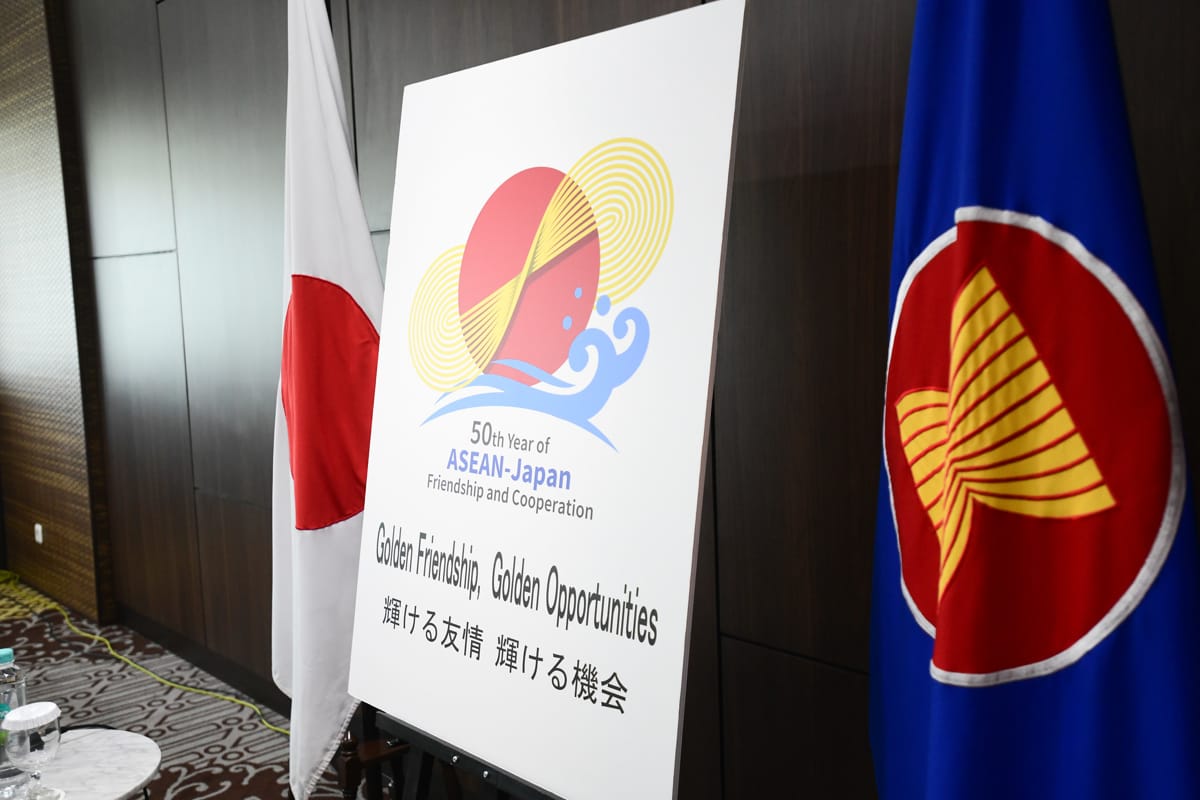Japan has long been among ASEAN’s “most trusted” economic partners. Through tactful engagement, Tokyo helped ensure Southeast Asian states remained in the Trans-Pacific Partnership trade deal after US withdrawal, promoted the investment of billions of dollars in regional companies, and provided significant technical assistance to expand the region’s infrastructure.
To take its relationship with ASEAN to the next level, Tokyo recently announced that it would soon upgrade ties with the organisation to that of a “comprehensive strategic partnership”, as Japan seeks to solidify its economic position in Southeast Asia and marks the 50th anniversary of its diplomatic relations with the regional bloc.
In January, Japan’s Ministry of Economy, Trade and Industry (METI) released an interim note – the “ASEAN-Japan Economic Co-Creation Vision”. This effort to boost economic ties will be finalised and unveiled at a Japan-ASEAN Summit in December and calls for a fundamental shift in Japan’s economic approach to the region.
The key component of this shift, deemed to be a “global value chain model of development”, is the need for both large and small Japanese companies to respect, uphold, and promote human rights and environmental sustainability within the ASEAN region. To this end, the vision identifies four pillars for future cooperation that embed these key principles.
In the first pillar, to foster sustainable development, the draft vision recommends that Japanese companies expand their efforts to assist ASEAN countries in tackling climate change. By providing financial and technical support through vehicles such as the “Asia Zero Emission Community”, an initiative to help Southeast Asian states transition away from fossil fuels and towards renewable energies such as solar, wind, and geothermal power, Japan can become an important player in accelerating ASEAN’s energy transition.
In the second pillar, to promote innovation, the vision recommends that Japanese companies collaborate and form partnerships with their smaller ASEAN counterparts. Particularly, the vision prescribes a formula for how larger Japanese companies can support ASEAN start-ups and SMEs to develop measures that improve the environment and mitigate the impacts of climate change. By providing human and financial resources to ASEAN companies, large Japanese multinationals can help to promote biodiversity and create new technologies that tackle sustainability challenges, thereby “co-creating” new opportunities to combat ongoing environmental degradation across much of the region.
The vision also recommends that efforts to promote sustainability in ASEAN at the multilateral level be expanded through international organisations such as the Economic Research Institute for ASEAN and East Asia (ERIA). Specifically, the vision points to an expanded role for the ERIA’s Digital Innovation and Sustainable Economy Centre, a new research arm announced at the East Asia Summit Economic Ministers’ Meeting in September 2022.

In the third pillar, to strengthen cyber and digital connectivity, the vision recommends establishing a cross-border database between Japanese and ASEAN companies that can track their progress on decarbonisation goals. Such a focus on ethical investments is in line with METI’s recent efforts to account for and eliminate human rights risks including forced labour and child labour in the supply chains of Japanese companies operating in Southeast Asia and other developing economies.
In the final pillar, to expand human capital, the draft vision recommends that Tokyo provides more work and educational opportunities to promising ASEAN students and youth. While Japan has provided a large number of scholarships to ASEAN students over the past decade, the country’s technical intern program has come under fire in recent years for being a “back door” to import cheap labourers into Japan. In total, Southeast Asian nationals account for the majority of these technical interns, who are paid below minimum wage and often work under poor conditions.
While Japan’s new vision provides a solid blueprint for its future economic cooperation with Southeast Asia that can enhance ties between the two sides in the long term, there remain significant challenges. There may be reluctance among some ASEAN states to fully embrace some of the vision’s sustainability provisions, such as the incorporation of reporting requirements on decarbonisation, due to concerns over economic growth. Meanwhile, lingering flashpoints in the bilateral relationship, including the treatment of ASEAN nationals in the country’s technical intern program, could also create future roadblocks to implementation.
The willingness of Japan to engage with their ASEAN counterparts on the future of their economic relationship is likely to be welcomed across the region, but listening to the concerns of their partners will be key for the country to retain its position as the region’s “most trusted” economic partner. As Japan faces several structural challenges including an aging population, a weak yen, and declining global economic influence over the next decade, the new vision can help Tokyo to create a more resilient and long-term partnership with Southeast Asia.

